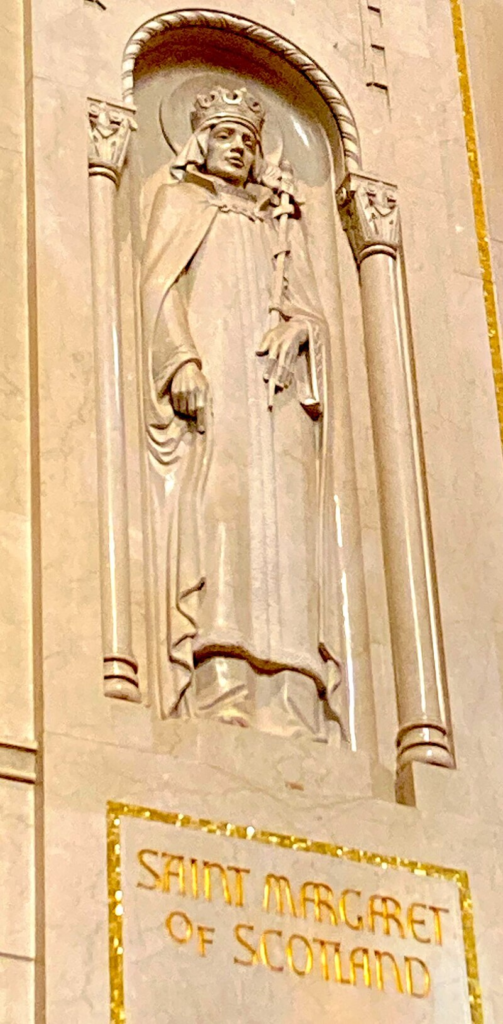When Justice Scalia’s son presided over his father’s funeral mass, one theme was the reconciliation of the old and the new. The goodness or badness of Scalia’s jurisprudence in the transience of politics to one side, this son of an immigrant rose to pre-eminence in the law with an adherence to originalism when approaching the US constitution and beneath this with a robust and persistent reconciliation between the constitution and his own faith:
He knew well what a close-run thing the founding of our nation was. And he saw in that founding, as did the founders themselves, a blessing, a blessing quickly lost when faith is banned form the public square, or when we refuse to bring it there.
Scalia’s funeral mass was held at Washington DC’s Basilica of the National Shrine of the Immaculate Conception, which holds a relief sculpture of St Margaret of Scotland She is venerated on 16 November by the old – the Catholic Church – and by the new – the Anglican and with it the Episcopalian Churches – to mark the day of her death in 1093.
Margaret of Wessex, as she is also known, was a key player in the development of the English and Scottish monarchies in the wake of the Norman conquest. She was, by her granddaughter Empress Matilda’s son Henry II, a matriarch of our post-Norman English monarchs down to today. She was, by her son David I, a matriarch of the post-Norman Scottish monarchs down to today. Her husband was the Malcolm of Macbeth. King Charles III may be king of a United Kingdom but it is Margaret who ensured that he is differently Charles III of Scotland and Charles III of England.
Margaret’s piety is well-recorded although in terms of old v new, her contribution to the development of Christianity is counterintuitive. In her world, the old was the local insular catholicism while the new was the intellectual development of continental catholicism. She appears to have worked with Lanfranc, the Italian jurist and Benedictine monk who would become the first archbishop of Canterbury to be appointed in the Conqueror’s reign.
Margaret’s most enduring quality for the genealogist is her house. The house of Wessex – the house of Alfred the Great – ruled not until 1066 but until a half century before, when the Danes under Canute conquered England, and Margaret – granddaughter of the king deposed by Canute – grew up in Hungary, the land of her father’s exile.
Fast forward to 1066. Under Edward the Confessor, the house of Wessex had regained the kingdom of England. Whatever else he confessed, historians confess puzzlement over his intention as to succession.
The Norman version is that he had promised England to William of Normandy. The Saxon version is that Harold Godwin, scion of the most powerful family of the realm, had demanded and received the same promise. William met Harold at Hastings, William won, and 1066 and all that…
… but not quite. Later in the year surviving Anglo-Saxon leaders in council elected Margaret’s brother Edgar Aetheling, last male member of the royal house of Wessex, king. It didn’t last, and Edgar and the leaders duly attended the Conqueror’s coronation on Christmas Day.
Years later, Edgar was on a diplomatic mission for the Conqueror’s brother and successor William Rufus. The mission was to negotiate with Malcolm, king of Scotland and Edgar’s brother-in-law. The mission did not succeed and battle broke out. Malcolm died on the field and his son and heir Edward died of his wounds three days later, hours before Margaret. It is said she died of grief.
Almost five centuries later, Mary Queen of Scots had Margaret’s head removed to Edinburgh Castle as a relic to assist her in childbirth. Mary’s child James VII of Scotland would also become James I of England.
